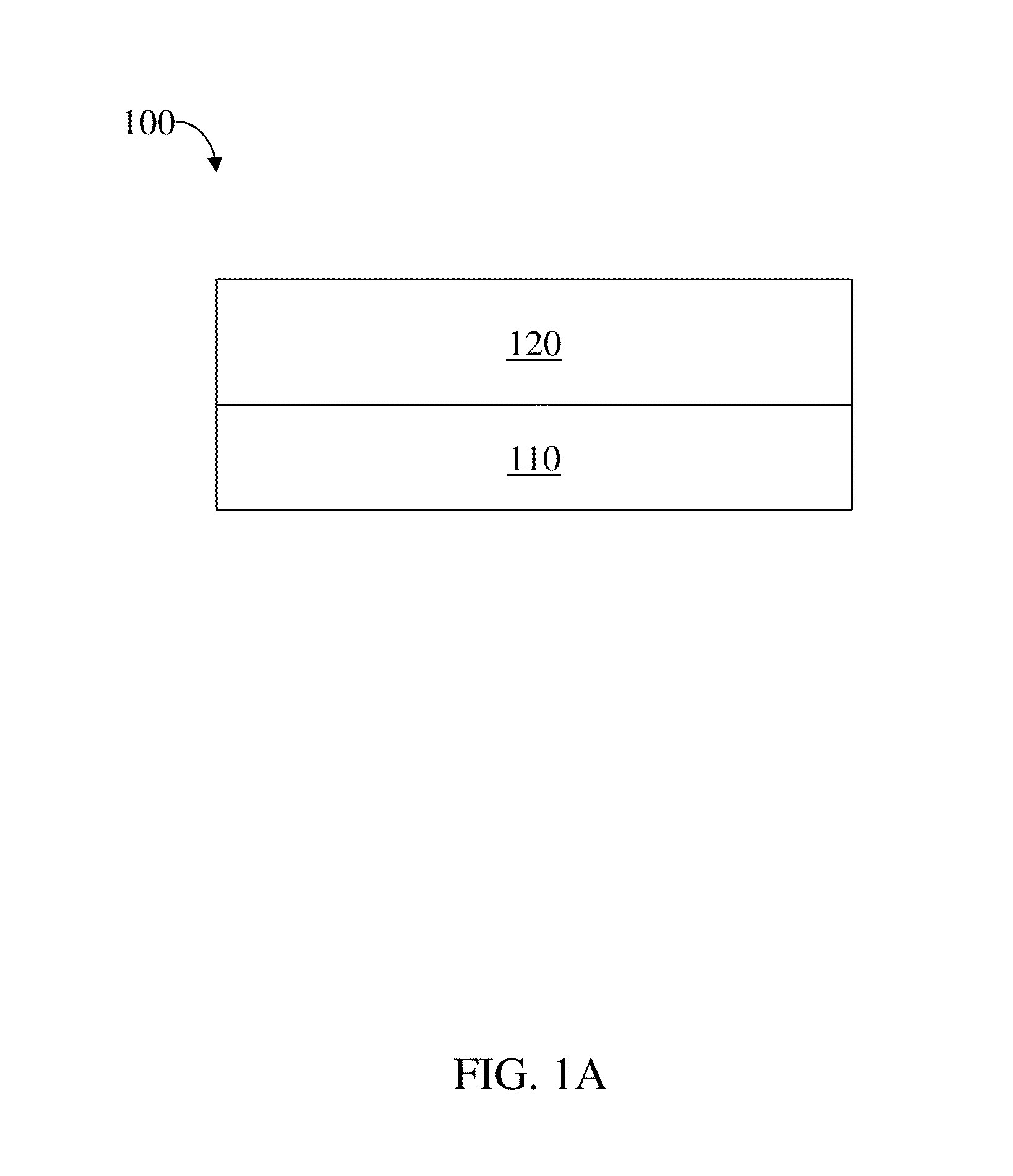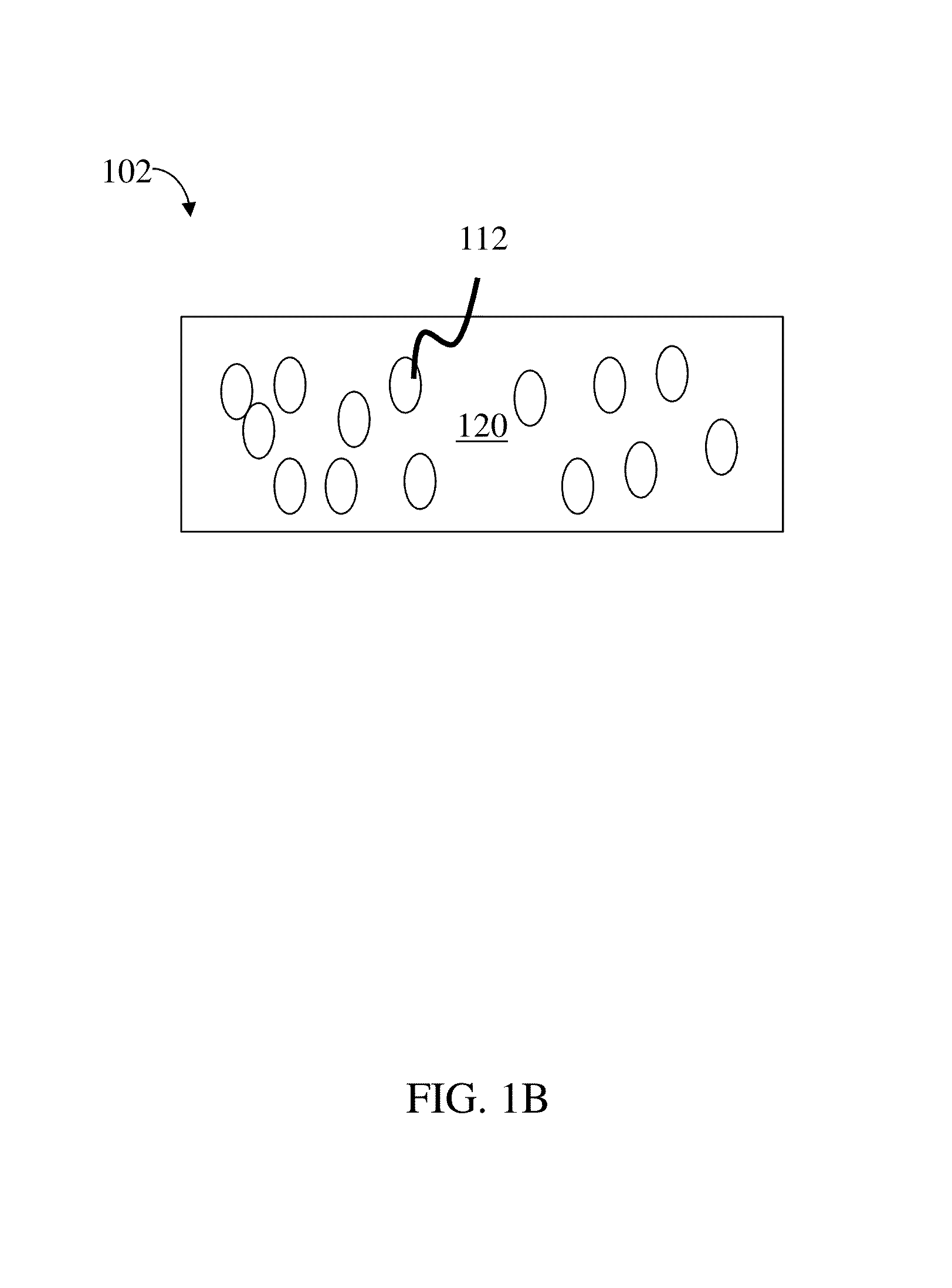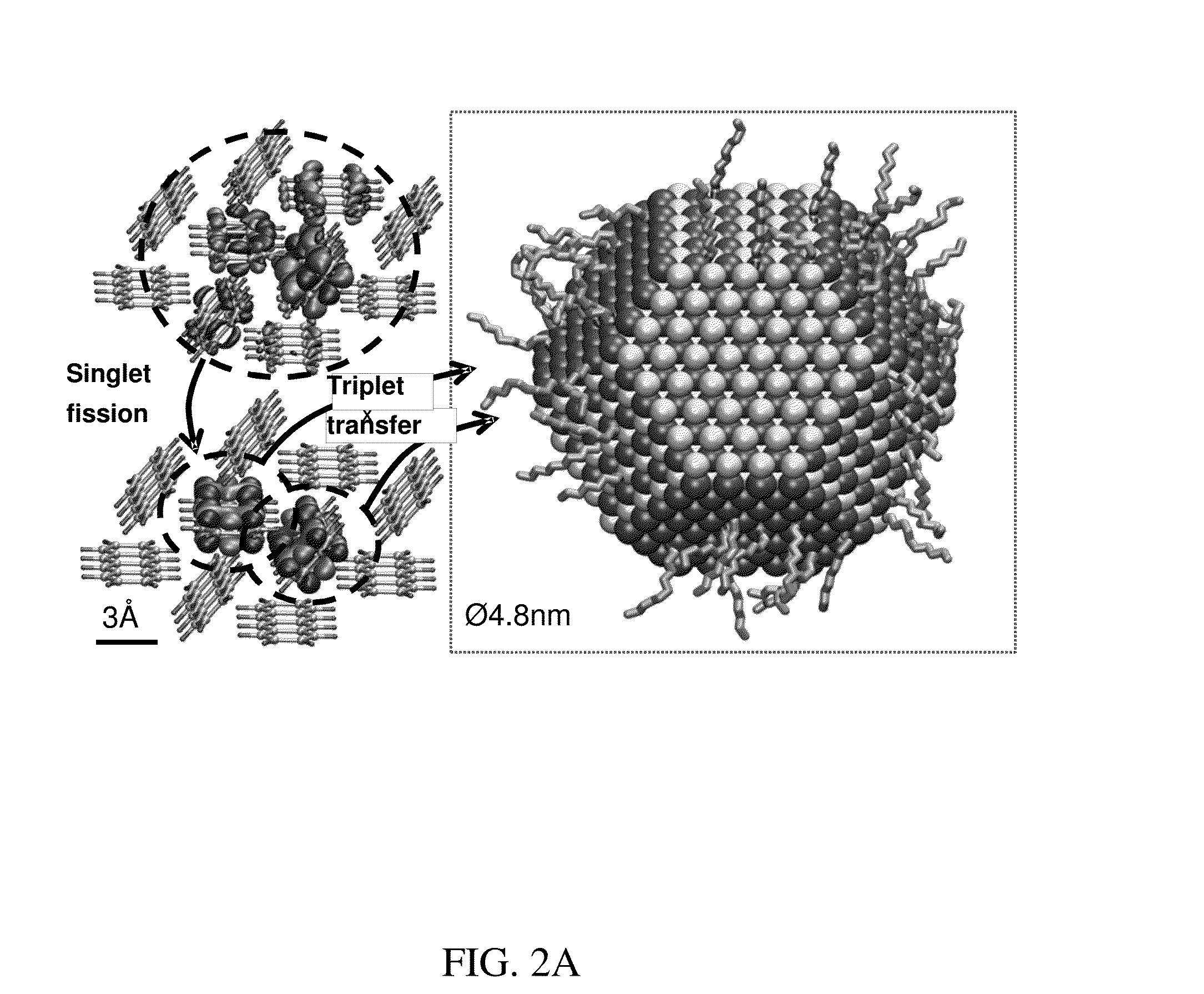Compositions and methods for the downconversion of light
- Summary
- Abstract
- Description
- Claims
- Application Information
AI Technical Summary
Benefits of technology
Problems solved by technology
Method used
Image
Examples
example 1
[0077]The following example describes the synthesis of nanocrystals, according to some embodiments.
[0078]Lead sulfide nanocrystals (NC) were synthesized as described below. Specifically, lead (II) acetate trihydrate (11.38 g, 30 mmol), 1-octadecene and oleic acid (varied quantities as designated by Table 1) were degassed in a 1000 ml three-neck round-bottom flask at 100° C. until the solution turned clear. The solution was cannula transferred to a nitrogen-flushed 1000 mL four-neck round-bottom flask equipped with a mechanical stirrer. Under nitrogen flow, the solution was heated to the injection temperature (see below), at which point a mixture of bis(trimethylsilyl)sulfide (3.15 ml, 15 mmol) in 1-octadecene (150 ml) was rapidly injected. The resulting nanocrystals were transferred to a nitrogen glovebox where flocculation was performed three times with anhydrous butanol, methanol, and / or acetone. The nanocrystals were redispersed in hexanes or octane.
TABLE 1FirstQuantity in reacti...
example 2
[0079]The following example describes the fabrication of organic materials and nanocrystals, according to some embodiments.
[0080]The glass substrate was cleaned by sequential sonication in Micro90 detergent solution, deionized water, and acetone, after which it was immersed in boiling isopropanol and then dried under a stream of pure N2. The nanocrystals and substrates were loaded into a dry nitrogen glovebox with H2O and O2 concentrations less than 1 ppm. Solutions of oleic acid (OA) capped nanocrystals dissolved at 25 mg / mL in octane were spin-cast onto the cleaned soda lime glass at a speed of 2500 rpm and a ramp rate of 2000 rpm / s for a total of 60 seconds. For ligand exchanged samples, the single layer of nanocrystals was exposed to a 0.01 M solution of ligand in acetonitrile. The exposure time varied between 30 seconds to 30 minutes. After exposure, the excess ligand was removed by three rinse cycles with pure acetonitrile. The resulting nanocrystal layer is 50.0+ / −5.4 nm thic...
example 3
[0082]In the following example, a photovoltaic device containing an article as described herein is investigated.
[0083]Inverted photovoltaic devices were constructed to verify the energy level-based prediction that the tetracene / PbS interface does not dissociate excitons. The energy level diagram is shown in FIG. 3. Two layers of nanocrystals were spun on the ITO and ligand exchanged to caprylic acid. These layers were followed by 20 nm of tetracene, 8 nm of m-MTDATA as an exciton blocking layer, and 5 nm MoO3 to improve contact to the gold cathode (80 nm). The external quantum efficiency of these devices is plotted in FIG. 3(b). The overall EQE is low, due to the low conductivity of the nanocrystals and poor hole extraction of the device. However, the absorption peaks of tetracene are clearly visible. This indicates that photons may be absorbed in the tetracene generate photocurrent. However, UPS results, FIG. 3(a), indicate that the HOMO level of the nanocrystals is ill-suited for ...
PUM
 Login to View More
Login to View More Abstract
Description
Claims
Application Information
 Login to View More
Login to View More - R&D
- Intellectual Property
- Life Sciences
- Materials
- Tech Scout
- Unparalleled Data Quality
- Higher Quality Content
- 60% Fewer Hallucinations
Browse by: Latest US Patents, China's latest patents, Technical Efficacy Thesaurus, Application Domain, Technology Topic, Popular Technical Reports.
© 2025 PatSnap. All rights reserved.Legal|Privacy policy|Modern Slavery Act Transparency Statement|Sitemap|About US| Contact US: help@patsnap.com



